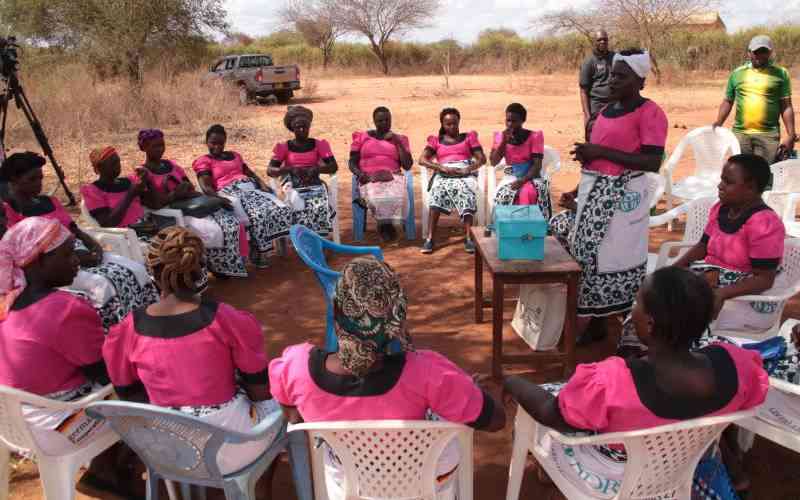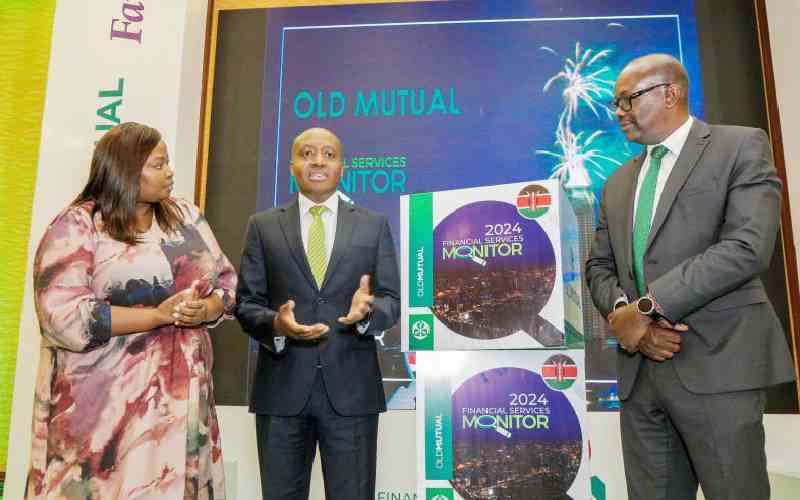Old Mutual Plc, which is 185 years old, has just announced it is splitting up into four independent units.
The £9.5 billion (Sh966 billion) South African financial services group that started in Cape Town will split into: Old Mutual Emerging Markets (a primarily African financial services and insurer), Old Mutual Wealth (a UK-based wealth manager), Nedbank (a South African Bank) and Old Mutual Asset Management (a US asset manager).
Separation is largely expected to be complete by 2018.
Its Kenyan subsidiary, UAP-Old Mutual Holdings, is still in the middle of integration after a merger last year. The merged firm’s listing at the Nairobi Securities Exchange (NSE) in early 2016 had earlier been reportedly pushed to 2018.
The firm, through its group CEO, Peter Mwangi, reassured clients and investors that these latest developments in its parent company would not materially affect its plans.
Old Mutual has lately been on an aggressive acquisition and growth strategy across Africa, having set aside Sh43 billion three years ago for a stab at becoming the premier pan-African financial and insurance services firm.
News that it is breaking up has sent its London and Johannesburg-listed stocks gyrating.
Aggressive acquisitions
Why would Old Mutual Plc stutter and split up after its high-profile acquisition blitz of local firms like UAP Group, Faulu Microfinance and a strategic partnership with Ecobank Group? And what does this mean for the financial services and insurance industry in Kenya and the region?
Locally, UAP Group has an enviable regional presence and a significant 15 per cent of its investment portfolio in property.
The corporate bond it floated in 2014, funded investment grade commercial property — like its flagship properties, UAP Tower in Nairobi; UAP Tower Juba; UAP Office Blocks in Kampala — and mulling a Real Estate Investment Trust (REIT), are major revenue earners going forward.
In early 2015, Centum Investment sold its 23.3 per cent stake in UAP to Old Mutual for Sh8.8 billion.
Old Mutual then purchased another 37.3 per cent stake from private equity (PE) firms Aureos, Africinvest and Swedfund for Sh14 billion, bringing its total shareholding to 60.66 per cent.
Two months earlier, in October 2014, Old Mutual acquired Faulu Microfinance by purchasing a 67 per cent stake at $40 million (Sh4.1 billion at current rates), with a view to rebrand and reposition the deposit-taking microfinance (DTM) firm into a bank. Faulu, with over 400,000 customers, is Kenya’s second-largest DTM after Kenya Women Microfinance Bank.
UAP Holdings, on the hand, was a mid-tier player in the crowded insurance industry, with a 5 per cent market share through UAP Life Assurance Company. Old Mutual had a 2.5 per cent share, bringing their combined total market share to 7.5 per cent.
Stay informed. Subscribe to our newsletter
Though it has a regional presence, operating in Kenya, Uganda, South Sudan, Rwanda, Tanzania and DR Congo, UAP lags behind listed industry behemoths Jubilee (17.8 per cent) and Britam (16.8 per cent).
But, although the six listed insurance firms control 61.2 per cent of the industry’s assets, the 44 non-listed firms are more efficient in asset utilisation. Although they control 39 per cent of assets, they gross 52 per cent of premiums.
Unique features
The Kenyan insurance industry has some unique features, albeit with a low penetration of 3 per cent, below Africa’s average of 3.8 per cent, but with an enviable balance sheet of Sh456 billion by June 2015.
Kenya is competitive globally — ranking first in gross premium growth in sub-Saharan Africa, with the only downside being the high loss and combined ratios.
Old Mutual’s annual operating profits before tax last year were Sh244.4 billion. The firm’s primary listing in London in 1999, with a secondary listing on the Johannesburg Stock Exchange (JSE), ushered it into the global big leagues.
The firm rapidly expanded into life insurance, asset management and banking operations across Europe, the US and Africa. But markets have not especially been enamoured by the group’s foray into other business lines and operations across Africa, Europe, the US, India and Asia-Pacific.
This, current CEO Bruce Hemphill and team believe, has led to the undervaluation of the firm, complex and costly operations across several currencies, and the lack of clarity on whether the group’s focus is in developed economies or emerging markets.
They believe a spin-off will enable the diverse units focus on their core markets, products, services and access financial markets easily, as well as drive up shareholder value and wealth.
Under increasing legal, regulatory requirements, cross-border and forex pressures, and the need to fundraise to meet capital requirements across different jurisdictions, this looks like a good bet.
Nedbank, in which Old Mutual has a 54 per cent stake, remains the crown in the jewel, contributing almost half of group profits, despite the rand depreciation. The firm now says it will reduce its stake to a minority position of 15-20 per cent.
NedBank is Africa’s third-largest bank, behind market leader Standard Bank and FirstRand Bank.
STRONG FUNDAMENTALS
Old Mutual Emerging Markets, which is the African financial services division under which UAP-Old Mutual Holdings and Faulu operate under, ranks second in profitability to the group.
Old Mutual Wealth (OMW) comes in third, and is a target of leveraged buyouts from cash-rich PE firms looking for an undermanaged and undervalued asset. As it is in a regulated business, OMW paid only 41 per cent of its net profits up to Old Mutual last year. PE firms reckon they can drive more value by loading more debt on the firm through a holding company.
In addition to reducing overall group debt levels, other cost-cutting measures announced by Mr Hemphill include a new dividend policy that may lower payouts to shareholders; closure of its London head office; and abolishment of it group structure, including Hemphill’s job, to save $114 million (Sh11.6 billion) ) in costs.
While these measures are commendable, and will unlock value over the long term for Old Mutual Emerging Markets, there is no respite in the short term as the firm concentrates on restructuring.
I anticipate that the UAP-Old Mutual Holdings-Faulu Bank merger and listing will succeed, as their fundamentals are strong.
This will ratchet up competition and innovation in the financial services and insurance sectors, as the merged group has a significant market share and will be able to cross-sell services and products.
The entry of global firms like Allianz, AXA and Prudential angling for big-ticket infrastructure and maritime contracts will heat up competition, deepen and widen the market, and force mergers and acquisitions.
Product and service innovation, as well as efficiencies in distribution channels, will drive penetration beyond the current 3 per cent, as the demographics are right and an aspirational populace comes to the market.
A consolidation in the industry is opportune, and the key differentiators for success will be how well firms ride the regional integration mantra, how well capitalised and run they are, and how well they comply with the risk-based compliance regimen.
The writer is East Africa MD at KEAMSCO, a New York, Bremen and Nairobi-based business advisory firm.
hezron@keamsco.com
 The Standard Group Plc is a
multi-media organization with investments in media platforms spanning newspaper
print operations, television, radio broadcasting, digital and online services. The
Standard Group is recognized as a leading multi-media house in Kenya with a key
influence in matters of national and international interest.
The Standard Group Plc is a
multi-media organization with investments in media platforms spanning newspaper
print operations, television, radio broadcasting, digital and online services. The
Standard Group is recognized as a leading multi-media house in Kenya with a key
influence in matters of national and international interest.
 The Standard Group Plc is a
multi-media organization with investments in media platforms spanning newspaper
print operations, television, radio broadcasting, digital and online services. The
Standard Group is recognized as a leading multi-media house in Kenya with a key
influence in matters of national and international interest.
The Standard Group Plc is a
multi-media organization with investments in media platforms spanning newspaper
print operations, television, radio broadcasting, digital and online services. The
Standard Group is recognized as a leading multi-media house in Kenya with a key
influence in matters of national and international interest.





